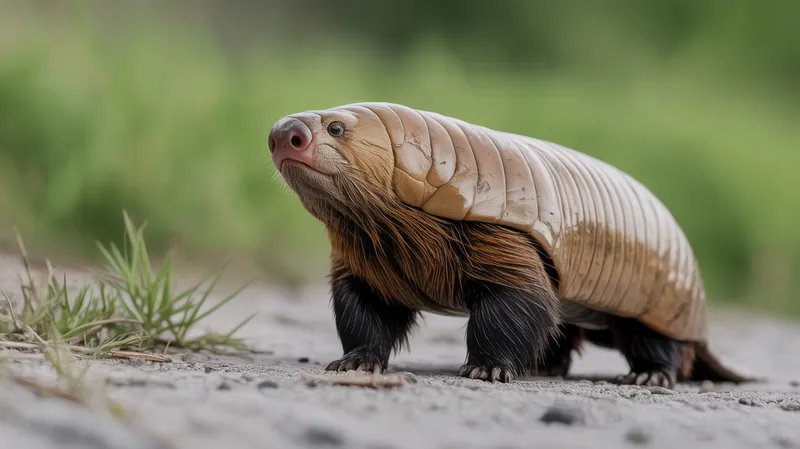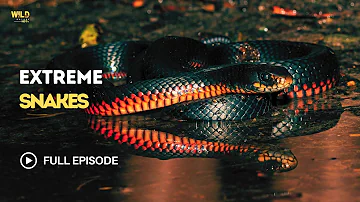
Dugite
Pseudonaja affinis

Meet the Dugite
The Dugite is a slender, highly venomous snake native to southwestern Australia. Characterized by its variable coloration, ranging from olive green to brown or grey, it often blends seamlessly with its environment, making it difficult to spot. Dugites are notable for their agility and are commonly found in a variety of habitats, including urban areas, where they hunt small mammals, birds, and lizards. Despite their potent venom, Dugites are shy creatures and generally avoid human contact unless threatened.
Classification
Reptile
Habitat
Coastal and inland regions, woodlands, grasslands, scrublands, and urban environments
Diet
Carnivore
Lifespan
10-15 years
Conservation
Least Concern
Weight
0.5-2 kg
📖Fascinating Facts
Color Variability
Dugites display a wide range of coloration, from olive green to brown, grey, or even almost black, which helps them camouflage in diverse habitats.
Rodent Control
They primarily feed on small mammals like mice and rats, making them important for natural pest control in their native range.
Urban Adaptation
Dugites are highly adaptable and are often found in suburban gardens and vacant lots, especially where rodents are abundant.
📋Detailed Description
The dugite (Pseudonaja affinis) is a slender, medium-to-large elapid snake, typically reaching adult lengths of 1.0–1.5 meters, with some individuals exceeding 2 meters. Its head is narrow and indistinct from the neck, and the body is smooth-scaled, allowing for rapid movement through dense vegetation and loose substrates. Coloration is highly variable, ranging from olive green to brown, grey, or even reddish hues, often with dark flecks or scales that provide effective camouflage against the sandy and rocky soils of southwestern Australia. The ventral surface is usually lighter, often cream or pale yellow. Dugites possess large, fixed front fangs, characteristic of the Elapidae family, and are equipped with potent neurotoxic venom. Their eyes are medium-sized with round pupils, providing keen vision for detecting prey and predators. The species is primarily terrestrial but is also a competent climber, occasionally ascending low shrubs or debris in search of food or shelter. Dugites are generally solitary outside of the breeding season, exhibiting secretive and shy behavior, and will usually flee when encountered. They are most active during the warmer months, with activity patterns shifting between diurnal and crepuscular depending on temperature and prey availability.
💡 Did you know?
The Dugite is a member of the same genus as the infamous Eastern Brown Snake, making it one of the world's most venomous snakes.
🔬Research & Sources
Wikipedia Summary
The dugite is a species of highly venomous, potentially lethal snake endemic to Western Australia, a member of the family Elapidae.
Last Modified: 5/20/2025
🎭Behavior & Social Structure
Dugites are primarily solitary and exhibit secretive behavior, spending much of their time concealed under rocks, logs, or within burrows. They are active hunters, employing both ambush and active foraging strategies to locate prey, which includes small mammals (especially introduced house mice and rats), birds, lizards, and occasionally other snakes. Dugites use their acute sense of smell (via the Jacobson's organ) and vision to detect prey, striking quickly and subduing it with venom. Feeding is opportunistic, and they may enter human dwellings or agricultural areas in pursuit of rodents, which has increased their presence in urban environments. When threatened, dugites may flatten their necks and raise the front part of their body in a defensive posture, but they generally prefer to escape rather than confront. They are not aggressive by nature but will defend themselves if cornered. Dugites are most active during spring and summer, with peak activity in the early morning and late afternoon during hot weather.
👶Reproduction & Life Cycle
Dugites are oviparous, with breeding typically occurring in late spring to early summer (October to December in southwestern Australia). Males engage in combat for access to females, intertwining and wrestling to establish dominance. After mating, females lay clutches of 10–30 elongated, leathery eggs in sheltered locations such as abandoned burrows, under logs, or within leaf litter. Incubation lasts approximately 60–80 days, depending on ambient temperature. There is no parental care after oviposition; hatchlings are fully independent and measure about 20–30 cm in length. Sexual maturity is reached at approximately 2–3 years of age, depending on food availability and environmental conditions. Reproductive output may vary annually with rainfall and prey abundance.
🛡️Adaptations & Survival
Dugites have evolved several adaptations for survival in the variable climates of southwestern Australia. Their cryptic coloration provides camouflage against predators and facilitates ambush hunting. The potent neurotoxic venom is highly effective for rapidly subduing small, agile prey and serves as a strong deterrent against predators. Dugites can tolerate a wide range of habitats, from coastal dunes to urban gardens, demonstrating ecological flexibility. Their slender, agile bodies allow them to exploit narrow crevices and burrows for shelter. Behavioral thermoregulation, such as basking in the morning and seeking shade during peak heat, enables them to maintain optimal body temperatures. They also exhibit seasonal shifts in activity patterns to avoid extreme temperatures and maximize foraging efficiency.
📚Research Sources
🎨Cultural Significance
The dugite holds a prominent place in the cultural landscape of southwestern Australia, often regarded with caution due to its potent venom and presence in populated areas. It features in local folklore and is sometimes referenced in Aboriginal stories, though it is not as mythologically significant as some other Australian snakes. The species is occasionally used in educational programs to raise awareness about snake safety and the ecological benefits of native predators. There are no known traditional medicinal or utilitarian uses, but the dugite is recognized as an important natural controller of rodent populations, indirectly benefiting agriculture and human health.
🔬Recent Research & Discoveries
Recent research has focused on the dugite's venom composition, revealing a complex mixture of neurotoxins, procoagulants, and myotoxins, with significant variation between populations and subspecies. Studies have also examined the species' adaptability to urban environments, highlighting behavioral plasticity and shifts in diet associated with increased rodent abundance. Genetic analyses are ongoing to clarify the relationships among the three recognized subspecies (P. a. affinis, P. a. exilis, and P. a. tanneri) and to assess potential cryptic diversity. Ongoing ecological monitoring aims to better understand population dynamics, habitat use, and the impacts of environmental change. Dugites are also of interest in medical research due to the clinical management of their envenomation, which can cause rapid onset of life-threatening symptoms requiring prompt antivenom therapy.
🎥Wildlife Videos

Extreme Snakes | Australia | Full episode | Animal documentary
Discover how the snakes of Australia evolved of millions of years. Explore diverse ecosystems, witness the behavior of ...
WildNature HDTv

Cold-Blooded Wonders - The Secret Lives of Snakes and Lizards | Full Documentary
Wrapped up in myths and misunderstandings, “cold-blooded” Reptiles are a diverse group with thousands of species crawling, ...
Free High-Quality Documentaries

Extreme Snakes | Africa | Full episode | Animal documentary
Discover how the snakes of Africa evolved of millions of years. Explore diverse ecosystems, witness the behavior of magnificent ...
WildNature HDTv

Most Venomous | Wild Ones | Episode 10 | Free Documentary Nature
Wild Ones - Episode 10: Most Venomous | Wildlife Documentary Watch 'Wild Ones - Episode 11' here: ...
Free Documentary - Nature

Steve Irwin Meets The World's Most Venomous Snakes | Real Wild
Journeying through the most remote parts of Australia, naturalist, conservationist and world-famous television personality Steve ...
Real Wild

Spits & Stings | Animal Armory | Episode 5 | Free Documentary Nature
Animal Armory - Episode 5: Spits & Stings | Animal Documentary Watch 'Animal Armory - Episode 6' here: ...
Free Documentary - Nature
🌍Habitat Information
The Dugite typically inhabits Coastal and inland regions, woodlands, grasslands, scrublands, and urban environments environments. Dugites have adapted to their environments with specialized features and behaviors.
Primary Habitat:
Coastal and inland regions, woodlands, grasslands, scrublands, and urban environments
More detailed habitat information will be available soon.
🛡️Conservation Status
The Dugite is currently classified as Least Concern. Conservation efforts are crucial for preserving this species for future generations.
Common Threats:
- 🏠Habitat loss and fragmentation
- 🌡️Climate change impacts
- 🎯Hunting and poaching
- 🏭Human-wildlife conflict
⚠️Threats & Conservation Challenges
Although currently listed as Least Concern by the IUCN, dugites face several threats, particularly from habitat modification due to urbanization, agriculture, and infrastructure development. Road mortality is a significant cause of death, especially in peri-urban areas. They are also susceptible to persecution by humans due to fear of snakebite, despite their generally non-aggressive nature. Predation by introduced species such as cats and foxes may impact juvenile survival. However, the species has shown resilience by adapting to human-altered environments, with some populations thriving in suburban areas due to increased rodent prey. Climate change and extreme weather events may pose future challenges by altering habitat suitability and prey availability.
🔬Scientific Classification
Scientific Name
Pseudonaja affinis
Classification Hierarchy
🔍 About Taxonomic Classification
Taxonomic classification is a hierarchical system used by scientists to classify and organize living organisms based on shared characteristics and evolutionary relationships.
The system moves from broad categories (Kingdom) to increasingly specific ones, with each animal's scientific name typically consisting of its Genus and species.
📝Community Notes
Share your observations and insights about the Dugite with our community of wildlife enthusiasts.
Join Our Community
Sign in to share your observations and connect with fellow wildlife enthusiasts.
Sign In to ContributeNo community notes yet
Be the first to share your observations about the Dugite!
Explore Dugite
Select a tab above to learn more about this amazing animal.
📸Photo Gallery
No photos available for this animal yet.
🌟Discover More Wildlife
Continue your journey of discovery with more fascinating animals from our database
